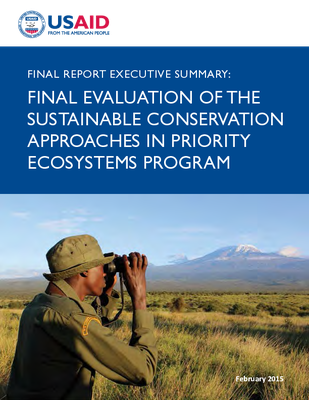Final Evaluation of the Sustainable Conservation Approaches in Priority Ecosystems Program

This final evaluation of the Sustainable Conservation Approaches in Priority Ecosystems (SCAPES) program assesses conservation strategies used by four implementing partners to address priority threats and strengthen local capacity to conserve biodiversity. The assessment examines seven strategies based on four key principles, gender considerations, and learning opportunities to identify enabling conditions and limiting factors that affected project activity outcomes.
Information relevant to Learning Questions:
Are enabling conditions in place to support a sustainable enterprise?
- Stakeholder alignment
- Access to credit/capital
- Governance
- Business alliances
- Financial management capacity, technical capacity
- Targeted participants, biodiversity linkage, policies for and enforcement of resource use, external disturbance
Does the enterprise lead to benefits to stakeholders?
- Increased income for participants
Do the benefits lead to positive changes in attitudes and behavior?
- Not addressed
Does a change in stakeholders’ behaviors lead to a reduction to threats to biodiversity (or restoration)?
- Residential and commercial development
- Agriculture and aquaculture
- Energy production and mining
- Transportation and service corridors
- Biological resource use
- Natural system modifications
- Pollution
- Climate change and severe weather
Does a reduction in threats (or restoration) lead to conservation?
- Forest ecosystems
- Species
Enterprise Types:
- Crops
- Livestock
- Non-timber forest products
- Terrestrial ecotourism
Document type:
- Evaluation
- Report

